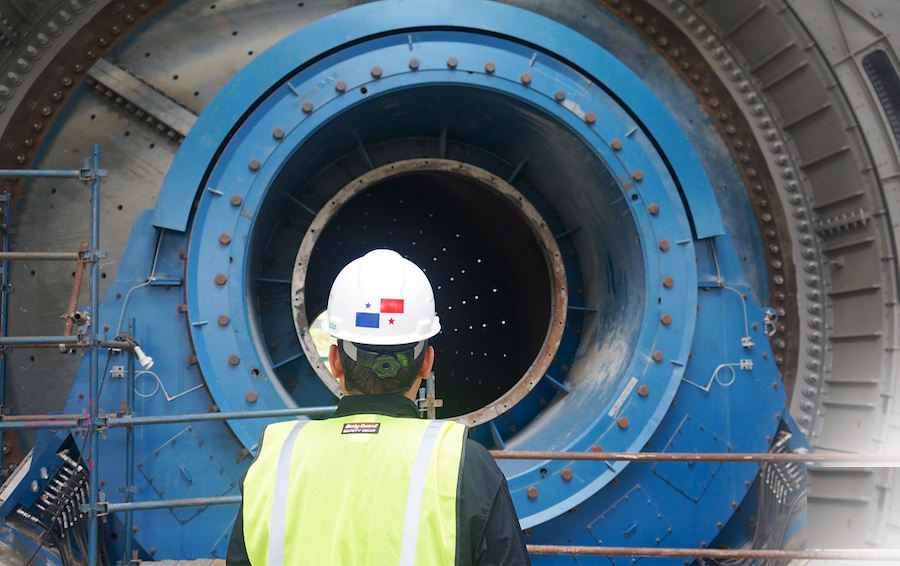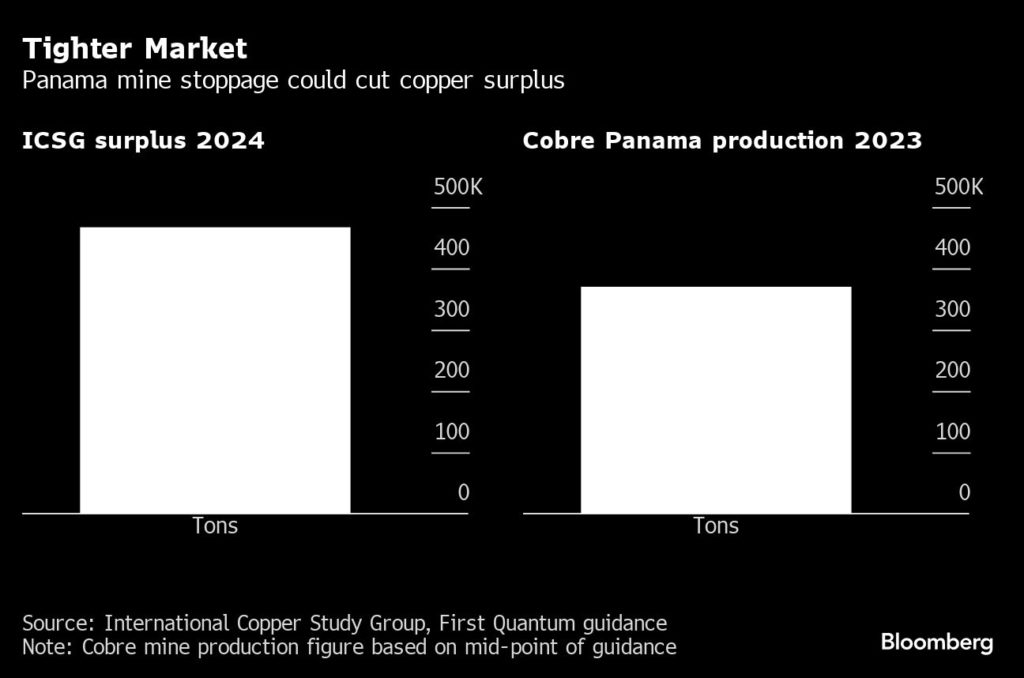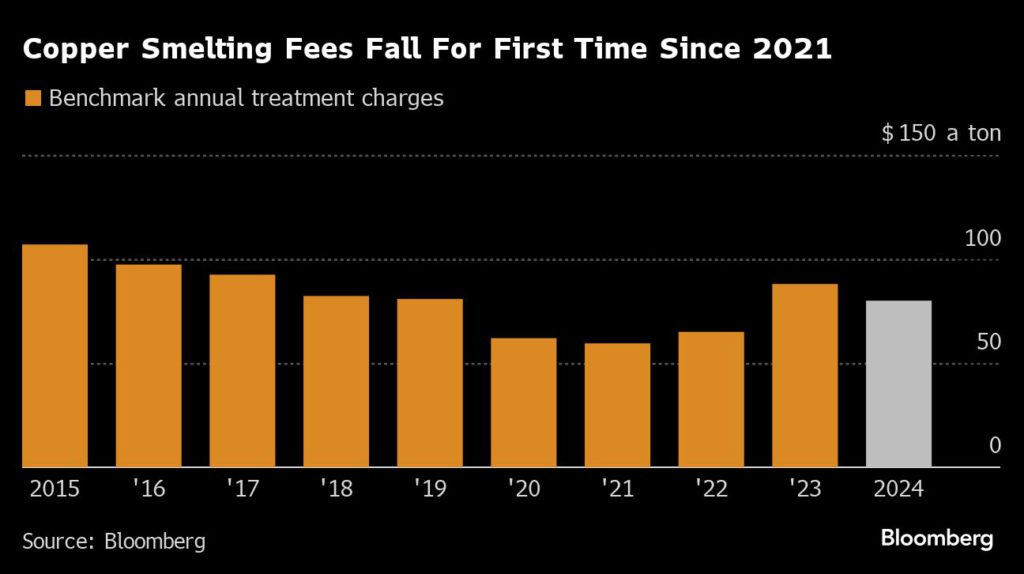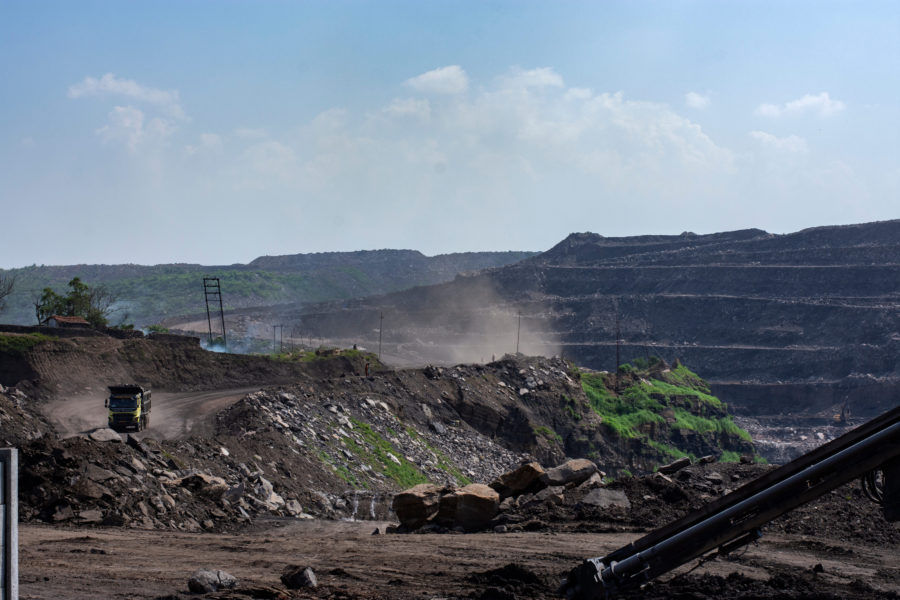Panama mine shutdown threatens copper’s surplus

A plan to close a major mine in Panama is threatening to upend the global copper market by whipsawing the industry back into a period of tighter supply.
Until recently, the broad consensus among forecasters was that copper would enjoy a comfortable surplus for the next few years, before tightening sharply later in the decade as supply struggles to keep up with surging demand for the energy transition.
The expectation for a looser market in the near term has been reflected in copper prices, which drifted sideways for most of this year, while inventory levels on the London Metal Exchange bounced back from perilously low levels to hit a two-year high last month. In early October, the International Copper Study Group said it expects a surplus of 467,000 tons next year — its largest forecast for a glut since 2014.
Now, the news that Panama intends to shut down one of the world’s biggest and newest copper mines threatens to disrupt that trajectory. Copper prices have risen about 6% since the protests erupted in Panama, and touched a 10-week high earlier on Wednesday before retreating.
Shrinking surplus
First Quantum Minerals Ltd.’s $10 billion Cobre Panama operation produces about 1.5% of the world’s copper supply, and boasts estimated copper resources worth more than $100 billion at current prices, according to Bloomberg calculations.
The project has been the target of protests across the central American country over the past six weeks, culminating in Tuesday’s announcement by President Laurentino Cortizo that authorities will start a process to close the mine after a supreme court ruling against it.
The Canadian company, which had already temporarily stopped production after protesters blocked supplies from reaching the mine, said on Wednesday it was still open to dialog and would seek clarification from the government, while listing a large number of concerns regarding a potential closure. Some analysts have suggested the mine could reopen under a new government after Panama’s election in May, if the company is able to renegotiate new terms.

But based on its estimated annual production of as much as 375,000 tons this year, a prolonged or permanent shutdown at Cobre Panama would erode most of the ICSG’s predicted surplus in 2024. The effect would be even more dramatic using a surplus of 355,000 tons forecast by Citigroup Inc. analysts.
Concentrates pressure
The shutdown at Cobre Panama comes at a particularly sensitive time in the market for copper concentrates, an intermediate product used to make refined metal, as Chinese smelters negotiate processing fees for next year with key mining suppliers.
In the first of such deals, Chilean miner and Antofagasta Plc and smelter Jinchuan Group agreed to copper-concentrate supply contracts for 2024 that set processing charges 9% lower than this year.

The drop is a sign of how the concentrate market has been tightening — partly because of a massive expansion of Chinese smelter capacity, which increases competition for the feedstock, and partly because of concern about the future of Cobre Panama — even before the president’s announcement on Tuesday.
“This is a significant event, adding uncertainty to the supply outlook,” said Craig Lang, principal analyst at researcher CRU Group. “This is likely to place further downwards pressure on copper concentrate market terms as smelters and traders look to cover Panama supply with alternative sources of material.”
Refined flows
Cobre Panama is a major supplier of concentrate to the Chinese market, where visible stocks of refined copper remain near multi-year lows, as robust consumption by electricity grids and the renewable energy industry counter depressed demand elsewhere.
A further tightening of the market could increase the flow of refined metal into the country, depleting stockpiles held elsewhere that have only partially recovered from the low levels seen earlier this year.
The supply disruptions also come as China is becoming increasingly aggressive in taking measures to shore up its ailing property sector, a significant pillar of global copper demand, while a slump in global bond yields makes the metal more attractive to investors.
And Cobre Panama isn’t the only mine facing disruptions. Workers at MMG Ltd.’s copper mine in Peru — another large operation — began a strike this week but will return to work on Thursday after authorities declared the action unfounded.
“For the past five years in a row, the mine disruption rate has been above the average of this century,” CRU Group’s Lang said.
(By Eddie Spence and Mark Burton)
More News
Gates, Bezos-backed critical minerals explorer to ‘go big’ on Congo – report
April 27, 2025 | 08:27 am
{{ commodity.name }}
{{ post.title }}
{{ post.date }}



Comments
Janice Beecher
The destruction of forests, water and indigenous lands is not worth all the copper in the world. Leave the rain forests alone and go find a desert to mine!